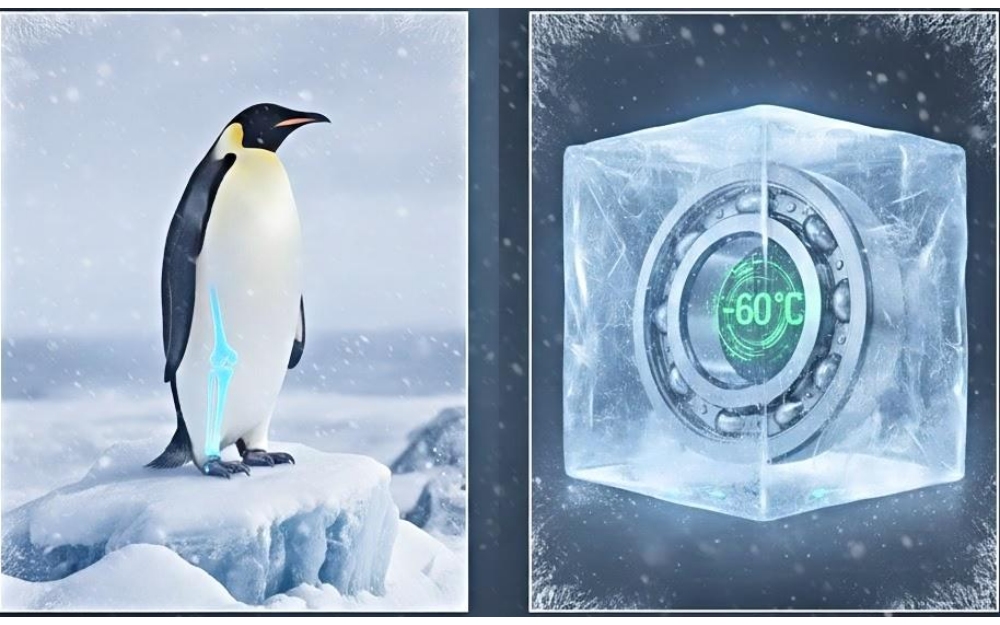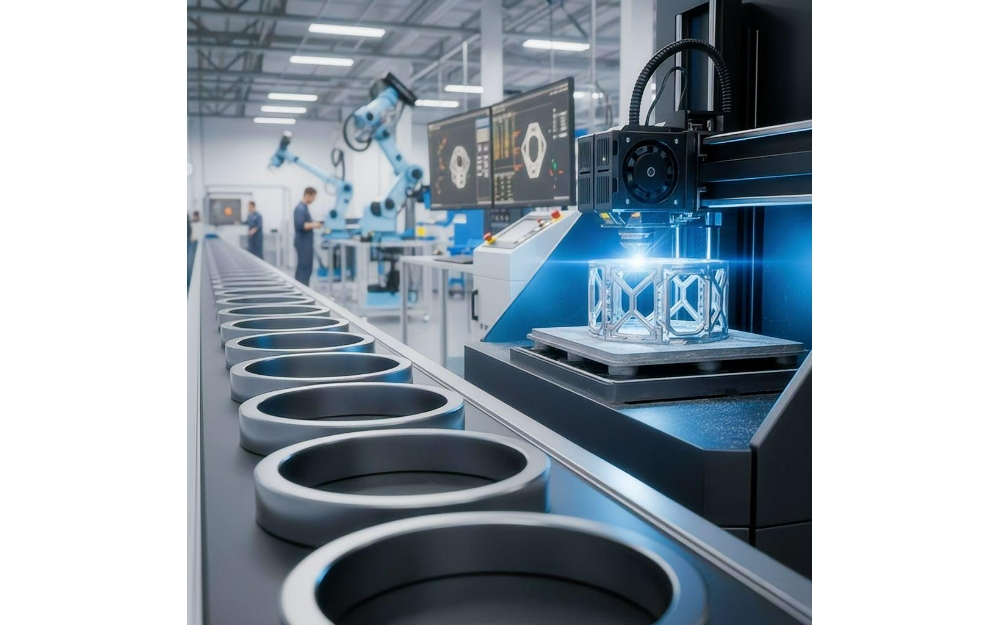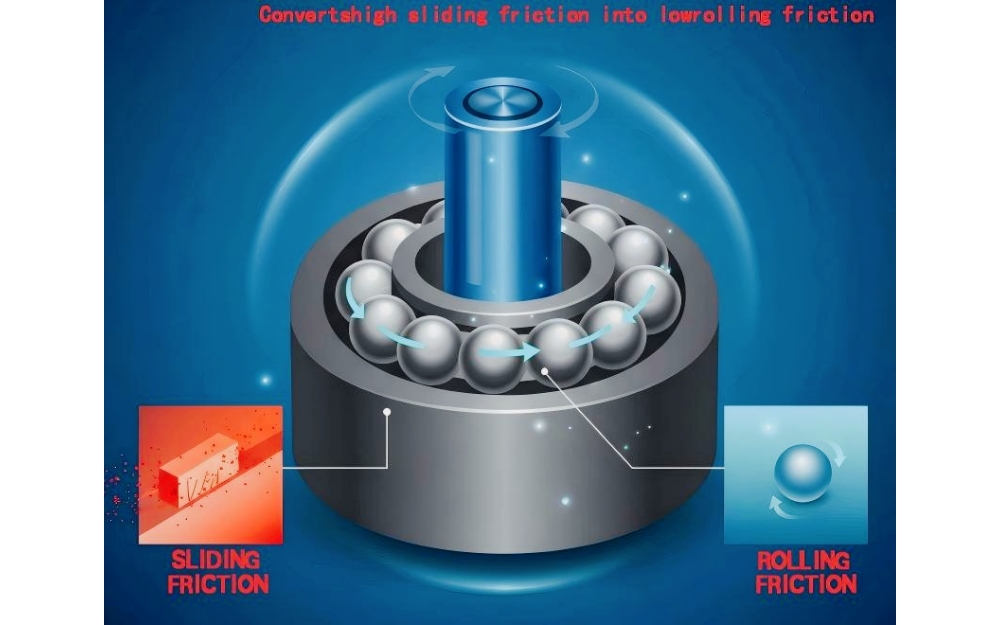About Us
Penguin knees and our bearings: which is more resistant to the cold? — Exploring bearing technology for extreme environments
Views : 11
Update time : 2025-11-20 20:41:00
In the icy wilderness of Antarctica, emperor penguins can stand upright against temperatures as low as -60°C. Why don't their joints freeze? Meanwhile, in humanity's journey to explore the unknown—from deep-sea probes thousands of meters below the surface to probes soaring through the thin atmosphere of Mars—how do their joints (bearings) operate reliably? This article will take you behind the scenes to explore bearing technology for extreme environments, showing how humanity draws inspiration from nature to create freeze-resistant and heat-resistant "super joints."

I. Nature's Masterpiece: The Penguin's Secret to Freezing
Emperor penguins are masters of survival in extreme environments. They possess multiple layers of unique physiological structures:
Dense feathers and a thick layer of fat: Forming a perfect insulation system, locking in body heat.
Countercurrent heat exchange system: Arteries and veins are tightly interwoven, allowing warm arterial blood flowing to the feet to exchange heat with cold venous blood flowing back to the heart, preventing frostbite and minimizing heat loss.
Special synovial fluid: The antifreeze proteins in their synovial fluid effectively lower the freezing point, preventing internal tissue freezing.
The penguin's knees are an integration of a highly efficient thermoregulatory and material system evolved over millions of years. So, how can human technological products compare?
II. Engineering Wisdom: The "Extreme Survival" Challenge of Bearings
In aerospace, deep-sea exploration, and polar scientific research, traditional bearings face fatal challenges:
1. Extreme Low Temperatures (-200°C and below): Ordinary lubricating oil solidifies and fails, steel toughness decreases, brittleness increases, and fractures are likely.
2. Ultra-High Vacuum (e.g., in space): Liquid lubricating oil evaporates rapidly, losing its lubricating effect and potentially contaminating precision optical instruments.
3. Alternating High and Low Temperatures: Materials experience enormous internal stress due to thermal expansion and contraction, leading to loss of precision or jamming.
To address these challenges, engineers have developed high-performance bearings specifically designed for extreme environments.
III. Unveiling the Three Magic Weapons of "Super Bearings"
1. Special Materials: Skeleton and Armor
Bearing Steel: Utilizing 440C stainless steel, 52100 high-carbon chromium steel, or more advanced high-temperature ceramics (such as silicon nitride). Ceramic bearings not only withstand extremely low temperatures but also maintain strength and stability at high temperatures, and have a lower density.
Cage: Utilizing engineering plastics such as polytetrafluoroethylene (PTFE) and polyimide (PI) or special copper alloys, these materials offer stable performance across a wide temperature range, preventing damage due to cold brittleness or thermal expansion.
2. Solid Lubrication: The "Lifeline" That Never Runs Dry
This is a core technology for coping with ultra-high vacuum and extreme low temperatures. When liquid lubricants are ineffective, solid lubricants shine:
Molybdenum disulfide (MoS2): With a layered structure like graphene and extremely low interlayer shear force, it is an ideal dry lubricant, widely used in spacecraft bearings.
Polytetrafluoroethylene (PTFE): Possesses an extremely low coefficient of friction and can be coated onto raceway surfaces or used directly as cage material for self-lubrication.
Soft metals such as gold and silver: Can also serve as lubricating films in vacuum environments.
3. Biomimetic Applications: Learning from Penguins
Scientists are researching how to integrate the wisdom of nature into engineering:
Surface Texture: Inspired by the microscopic structure of animal skin, micron-sized pits are laser-processed on the surface of bearing raceways. These "pockets" can store solid lubricant, achieving continuous self-lubrication, much like penguin feathers trap air.
Smart Material Coatings: Developing adaptive coatings that automatically adjust surface properties according to temperature changes, mimicking biological stress responses.
IV. Real-world Applications: The "Joints" of National Strategic Equipment
Spacecraft: The solar panel deployment mechanism, momentum wheel, and reaction wheel (the core of satellite attitude control) of satellites must use cryogenic bearings.
Mars Rover: The temperature difference between day and night on the Martian surface exceeds 100°C, requiring reliable bearings for its robotic arms and wheels.
Liquefied Natural Gas (LNG) Equipment: The pumps that transport LNG at -162°C rely on cryogenic bearings as their heart.
High-Altitude Helicopters: In the cold, thin air, the bearings of the main rotor and tail rotor face severe challenges.
Conclusion
The penguin's knee is a survival miracle forged by natural evolution; while human bearings for extreme environments are the pinnacle of engineering wisdom and materials science. This race to "resist the cold" has no losers; it's more like a dialogue spanning biology and mechanics. It is precisely in this process of learning from nature and constantly surpassing it that our probes can delve into the deep sea, roam Mars, and extend our vision to the edge of the universe.
相关新闻
 Penguin knees and our bearings: which is more resistant to the cold? — Exploring bearing technology for extreme environments
Penguin knees and our bearings: which is more resistant to the cold? — Exploring bearing technology for extreme environments
Nov 20,2025
Penguin knees and our bearings: which is more resistant to the cold? — Exploring bearing technology for extreme environments
 The "Transformers" of the Bearing Industry: 3D Printing Enables "Personalized Customization" of Bearings
The "Transformers" of the Bearing Industry: 3D Printing Enables "Personalized Customization" of Bearings
Nov 17,2025
The "Transformers" of the Bearing Industry: 3D Printing Enables "Personalized Customization" of Bearings
 Can Intelligent Inspection Really Extend Bearing Life?
Can Intelligent Inspection Really Extend Bearing Life?
Nov 13,2025
Can Intelligent Inspection Really Extend Bearing Life?


